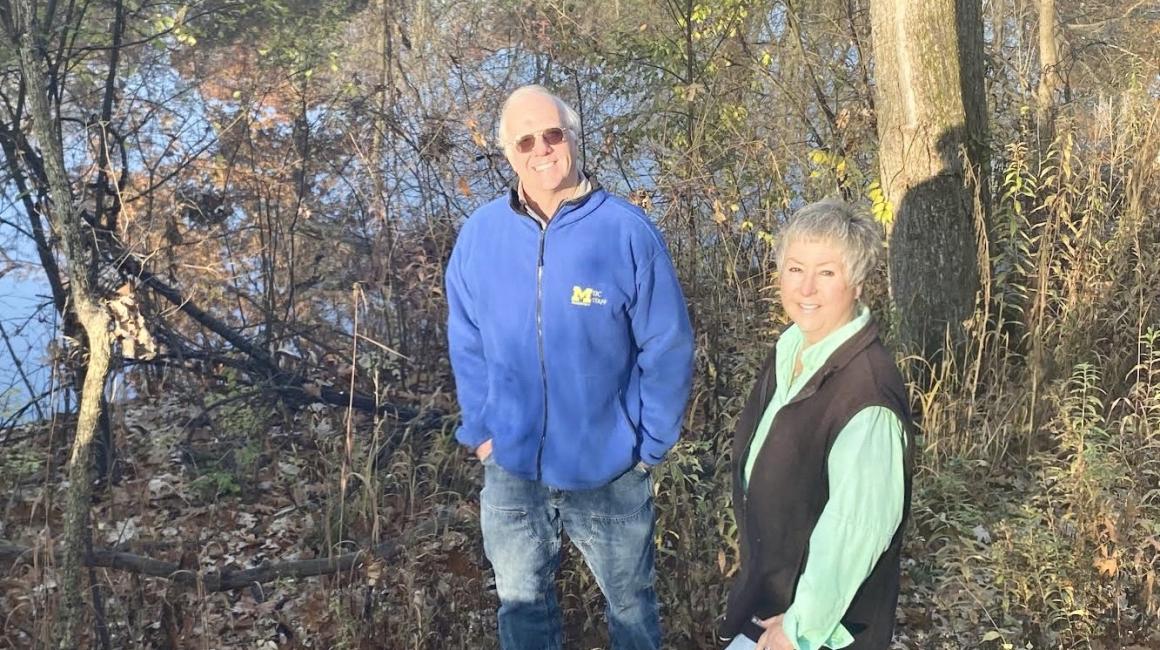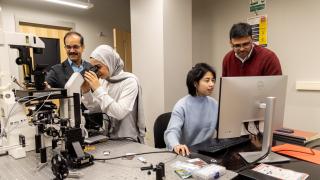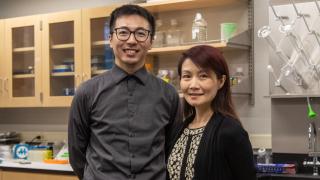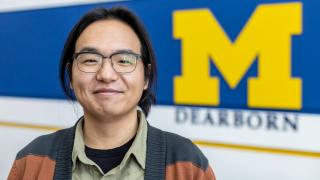
The Rouge River flows side-by-side with the careers of UM-Dearborn Environmental Interpretive Center educators Dorothy McLeer and Rick Simek. And it has for nearly 30 years.
The EIC may be where they teach the public about the river and the other natural features of the land around campus. But it’s not where they were first introduced to the Rouge, which connects to the Detroit River.
Prior to arriving at UM-Dearborn, EIC Program Coordinator McLeer would spend lunch breaks from her retail job near the river in an effort to catch glimpses of wildlife — she recalls seeing trash and debris. As a teenager, Environmental Study Area Manager Simek heard negative comments about the high levels of pollution in the waterway.
“People once believed that you could wash everything away. But where exactly is away?,” McLeer asked before singing a folk song that ponders the question.
She continued, “But there isn’t an away. A popular saying 40 or 50 years ago regarding sewage waste and other pollutants was “the solution to pollution is dilution.” Well, we’ve all learned that’s not true. That thinking took this beautiful place and turned it into what was once considered one of the most degraded urban rivers in the country.”
Today, the U.S. Environmental Protection Agency says it is “a model for river restoration.”
The story of this dramatic environmental turn-around is told in a new edited volume, “Rouge River Revived: How People are Bringing Their River Back to Life” (University of Michigan Press, 2022). “Rouge River Revived” is edited by environmentalist scholars John H. Hartig and Jim Graham — both of whom have spoken at UM-Dearborn — with chapters written by environmentalists, community activists and others intimately involved in the day-to-day process of river restoration. McLeer and Simek were invited by Biology Professor Emeritus Orin Gelderloos, the EIC’s founding director, to join him in penning a chapter for the book reflecting on the shift in paradigm about the historical neglect and abuse of the Rouge.
Current EIC Director Claudia Walters said the book raises awareness on the river revival and needed next steps to reach long-term ecosystem health and sustainability goals. “We are very excited and honored to be part of this project to share the story of the revival of our urban-industrial river that literally caught on fire in 1969 and is now a natural resource that is celebrated and cherished.”
Simek said awareness is important at all ages. Through EIC-hosted school field trips, Simek and the EIC staff have spoken with school children (between 10,000 to 12,000 children attend EIC educational programming in any given non-COVID year) who do not realize that they have a river flowing in their town. “To get people to care about protecting and restoring it, they need to know it’s here first. And they need to know who lives in it and around it — like the turtles, the herons, the beavers and others. They begin to connect to this place in their community,” he said. “Through awareness, you can see that light go off and then the questions start. That’s why books like ‘Rouge River Revived’ and educational programming are so important.”
To help people learn more about the river running through their communities, copies of the book will be in all libraries along the Rouge River watershed. The book’s contributors are available to lead lectures and book discussions with students and community organizations.
For example, an upcoming “Rouge River Revived” virtual discussion organized by Friends of the Rouge and the EIC will take place from 7 to 8:30 p.m. Nov. 17. Book co-authors will be panelists during the online event.
Schools, libraries, community organizations, or businesses interested in scheduling a presentation on “Rouge River Revived” can contact co-editors John Hartig or Jim Graham. For schools interested in hands-on programming to learn more about the river, contact the EIC by reaching out to Rick Simek.
Funding to provide copies of the book to libraries in the watershed was provided by the Colina Foundation to the University of Michigan-Dearborn. Additional funding for presentations and lectures was provided by the Americana Foundation.
Article by Sarah Tuxbury.



